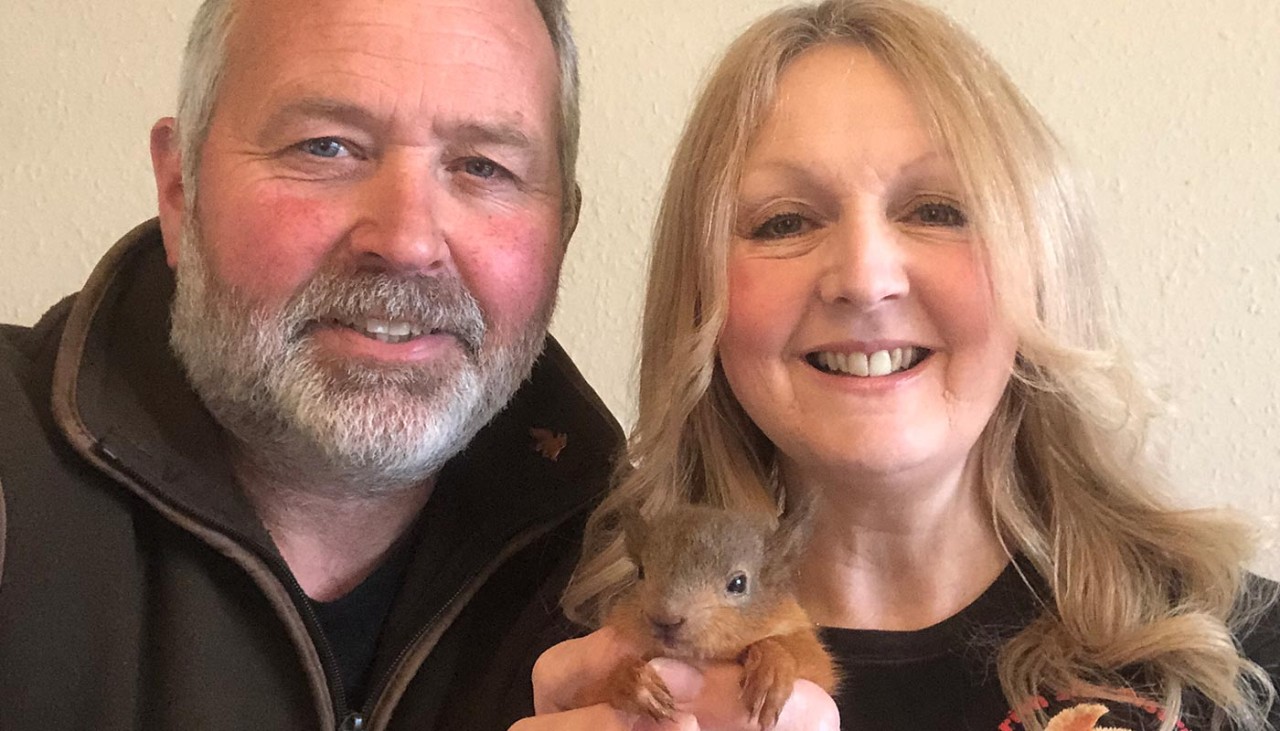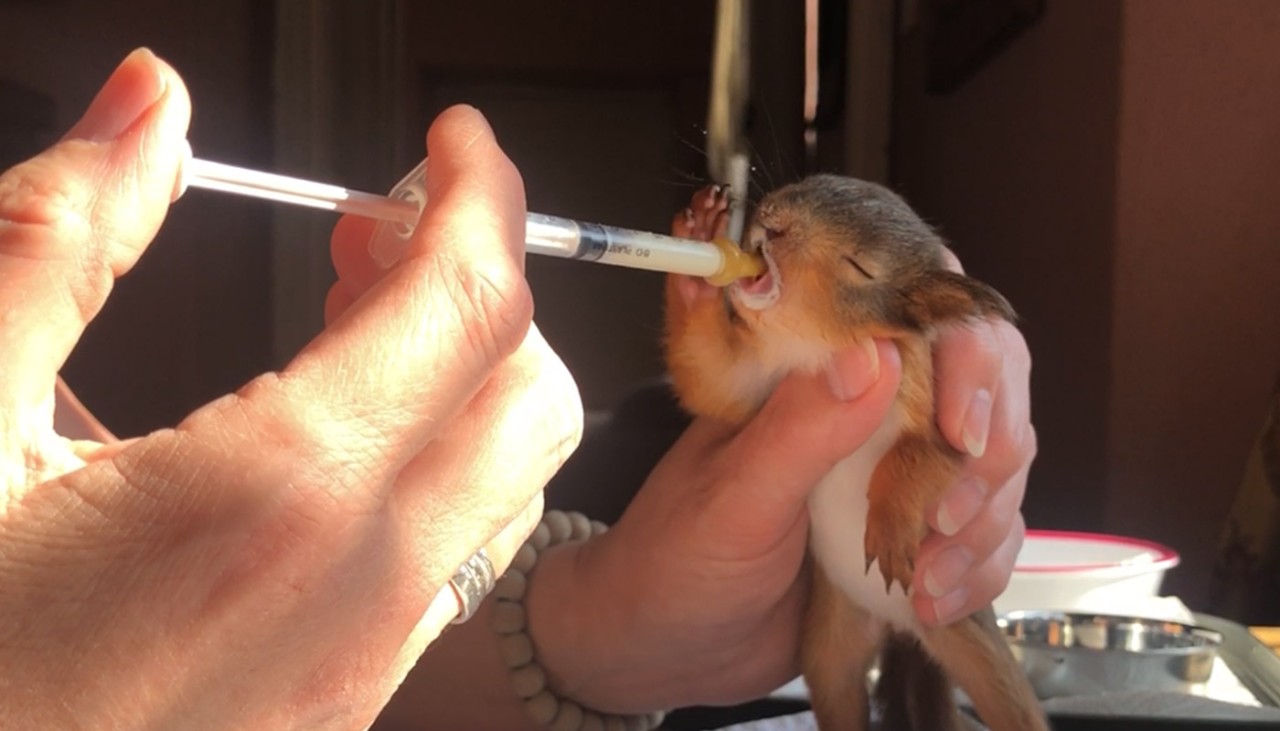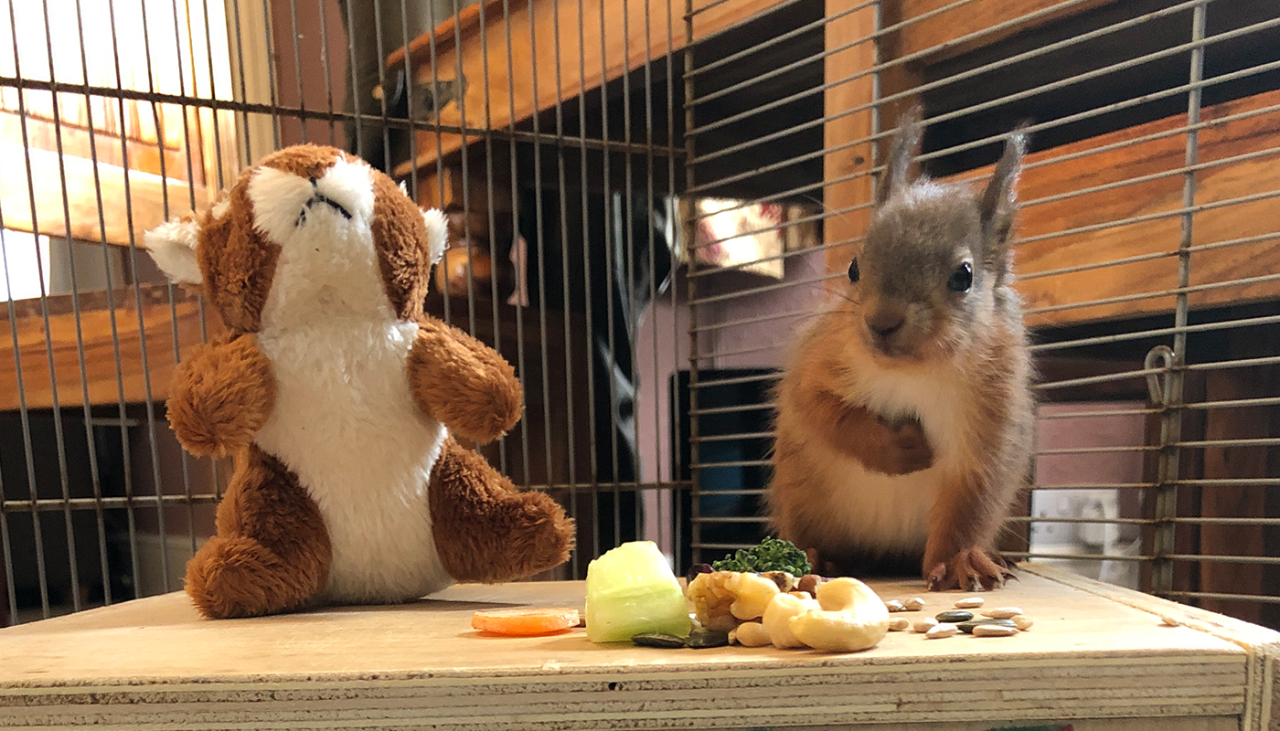Meet Oscar the red squirrel
With their distinctive red fur, tufted ears and bushy tail, a red squirrel is an eye-catching but unfortunately rare sight in the UK due to the threat from the larger non-native grey squirrel. At Center Parcs we are lucky to have red squirrels at two of our villages: Whinfell Forest and Longford Forest. This wouldn’t be possible without the conservation work that we do to protect the endangered species, particularly in the UK, where red squirrels numbers are particularly in decline.
Why are grey squirrels a threat?
The introduction of the grey squirrel from North America caused the number of red squirrels to plummet, not only because they are bigger and more adaptable, but they are also immune carriers of the squirrel pox virus, which can cause entire populations of red squirrel to die out. In the UK, reds are confined to only a few areas now: Scotland (particularly Highlands), Cumbria, Northumberland, Lancashire and Yorkshire, Isle of Wight, Brownsea Island and Angelsey.
Jerry Moss, Red Squirrel Ranger at Whinfell Forest has just celebrated his 25 years’ service milestone at Center Parcs, with 18 of those dedicated to protecting the red squirrel. He works in a 5km buffer zone around Whinfell Forest, working with different landowners and other rangers to manage the grey squirrel population and look after reds by installing feeders and trail cameras.
Jerry said, “We’ve had some good years and bad years. In the 18 years I’ve been doing this job we’ve had two major outbreaks of squirrel pox but with hard work, time, and dedication we still have reds at Whinfell Forest. Without this ongoing work their presence would have been long gone. We need to continue the work needed and that is boots in the woods.”
What are pine martens, and can they help?
Pine martens are apex predators and nocturnal hunters and can help in the conservation of red squirrels by controlling the population of greys. They currently co-exist with red squirrels in Longford Forest but for Jerry, the introduction of pine martens to Whinfell Forest isn’t worth the risk. He said, “all the hard work we have put in over the years could be undone in no time and once that has happened, we can’t go back. I just think it is too big of a risk to find out the hard way.”
When’s the best time to spot red squirrels?
According to Jerry, you can see red squirrels any time of year, but early mornings are always the best time to see them as they get up and start their day hunting for food. That being said, reds will be out and about looking for food or going about their “squirrely business” at all times of the day. Have you spotted any of our playful reds on your recent break? If you do manage to capture them before they scuttle off, don’t forget to share them on social media using the #mycp.
Meet Oscar, the red squirrel kitten
Jerry is currently looking after a red squirrel kitten (baby) with his partner Sarah. Oscar was rescued by the Penrith and District Red Squirrel group which Jerry volunteers for, as well as being one of five trustees for the charity.

Her mother was carrying her across a garden when a cat disturbed her, she dropped the kitten but didn’t return. Fortunately, the cat didn’t get Oscar and the owner of the garden contacted one of the rangers who covers that area, who then got in touch with Jerry. Jerry and Sarah have hand reared or taken in around 20 kittens and injured red squirrels over the years, with the aim to always release back out into the woodlands.
We caught up with Jerry to learn more about Oscar and all the work that goes into looking after a baby squirrel.
Hi Jerry, thanks for taking the time to chat to us! How old was Oscar when she first came into your care?
Oscar was only 3-4 weeks old when we got her on 17 March and will be released in May, depending how she gets on in the outside pen. The purpose-built pen is the transition space for young squirrels, so they can get used to being outdoors in a safe environment.
Where do you plan to release her?
All the squirrels we have taken care of go back to the wild here in the Eden Valley. She will be released in private woodland where I have squirrel feeders and nest boxes which are monitored with trail cameras but most importantly, there are other red squirrels.
How challenging is it to look after a squirrel kitten?
It’s a big challenge as we can get them at any age. They feed via a small syringe with a rubber teat on puppy replacement milk little and often for a few weeks. Sarah is fantastic with them, and her animal husbandry is second to none.

What is Oscar’s usual routine?
As her eyes and ears were closed when we got her, we needed to feed her every 3-4 hours and wipe her face with a damp cotton wool pad to clear away milk. We also needed to encourage her to pee or poo, then back into the fleece hat which is on top of a heat pad so she could sleep. We had to repeat this day and night until her eyes and ears opened, and she started to grow, we were then able to ease off the milk and start on solid foods, that’s when the mischief starts!
What solid food do you feed her?
We feed her a mixture of monkey nuts, hazel nuts, sunflower seeds, and peanuts. They also like grapes, apple, carrot, and broccoli.

Is there a story behind the name?
The ranger who picked her up originally thought she was male and called her Oscar, but then when I looked a few hours later I noticed she was female. We didn’t have the heart to change the name, so we stuck with Oscar, which has also grown into Princess Oscar.
We would love to hear your stories about our playful squirrels. Have you had an interesting encounter or impressive snaps? Share them with us at [email protected]

